
- Category
FILTER PROGRAMS AND ACTIVITIES:
Virtual Events for You!
View and reserve our upcoming virtual events
Virtual Resources
View our online videos, activities and programs!
Virtual classes available NOW!
Students and teachers of all ages will love learning with Denver Museum of Nature & Science.
*Onsite classes at your school or at the Museum are currently on hold.
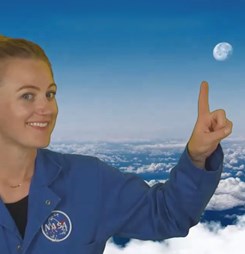
Astrotots to the Moon!
Program Type:
Virtual Science Academy
Virtual Science Academy
Recommended for ages 3-5
Countdown to lunar exploration and fun! Put on your helmet and buckle up as we blast off together for an adventure that takes us to Earth’s moon and back, all powered by our rocket-fueled imaginations. Students will have a chance to practice their science skills as they travel virtually with our professional Museum educators.
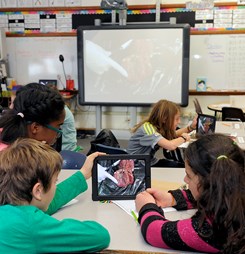
Virtual Heart
Program Type:
Virtual Science Academy
Grades 3 - 8
Virtual Science Academy
Available for bookings now!
2022 VSA Heart Science Standards
Get your students' pulse going with this live dissection experience. Your class will participate in interactive experiments and discussion, as well as guide the dissection of a real sheep heart.
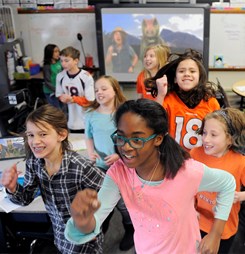
Virtual Lung
Program Type:
Virtual Science Academy
Grades 3 - 8
Virtual Science Academy
Available for bookings now!
2022 VSA Lung Science Standards
Take your classes' breath away as they get to peer inside the respiratory system. Explore lung anatomy while observing a sheep lung dissection and participate in activities, then make observations to learn how the respiratory system works.
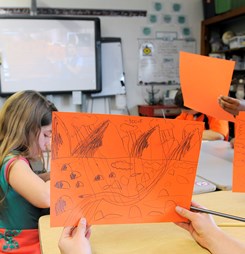
Virtual Art Station: Titan
Program Type:
Virtual Science Academy
Grades 1 - 8
Virtual Science Academy
Available for bookings now!
2022 VSA Titan Science Standards
Blast off to new discoveries with this live program that merges space science and scientific illustration! Titan is Saturn's largest moon and one of the most fascinating places in our solar system. Students and teachers will learn how to capture their own Titan investigations using scientifically accurate illustrations, just as other great scientists have done throughout history.
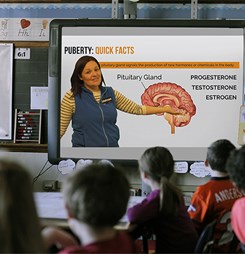
Virtual New Me
Program Type:
Virtual Science Academy
Grades 5 - 6
Virtual Science Academy
Available for bookings now!
2022 VSA New Me Science Standards
Explore the physical, emotional and chemical changes to the human body during a sensitive, respectful, co-ed discussion led by a professional educator. Ask honest questions and get honest answers. This class is now only offered as a Distance Learning course.

Scientists in Action: Discovering Teen Rex
Program Type:
Scientists In Action
Grades 4 - 12
Scientists In Action
Date: Thursday, September 26, 2024
Time: 9 a.m., 10 a.m., 11 a.m., and 1 p.m. Mountain Time
Created for grades 4-12, but all are welcome.
Who gets to find and excavate dinosaurs? Kids sometimes, it turns out! While hiking through the badlands of North Dakota, three pre-teens discovered a rarity in the world of paleontology: the astounding bones of an adolescent Tyrannosaurus Rex, now aptly named “Teen Rex.” Join the Denver Museum of Nature & Science for a chance to talk with the scientists currently preparing and studying the incredible find. Student questions and curiosity will run wild during this rex-ellent virtual learning opportunity, register your class today!
Registration opens soon!!

Scientists in Action: Brilliant Bats and What They Do
Program Type:
Scientists In Action
Grades 4 - 12
Scientists In Action
Date: Thursday, October 24, 2024
Time: 9 a.m., 10 a.m., 11 a.m., and 1 p.m. Mountain Time
Created for grades 4-12, but all are welcome.
From vampires to witchcraft, bats sometimes get a bad rap. But is their spooky reputation deserved? Register your class to chat about bat anatomy and physiology with Andie Carrillo, Zoology Preparator for the Denver Museum of Nature & Science, who works with the order Chiroptera...inside and out. Why are bats important to their ecosystems? How do we study bats and other animals at the Museum? Hang around (or upside down) and you just might have your mind changed by these incredible flying mammals. Register your class today for this behind-the-scenes virtual field trip!
Registration opens soon!!

Scientists in Action: Mighty Mutations and Dazzling DNA
Program Type:
Scientists In Action
Grades 4 - 12
Scientists In Action
Date: Thursday, November 21, 2024
Times: 9:00am, 10:00am, 11:00am, 1:00pm Mountain Time
Created for grades 4-12, but all are welcome.
Did you know that you share over 60% of your genetic makeup with a banana? And compared to other humans, you have 99.9% identical genes? It makes you wonder: if humans are separated from one another by a mere .01%, how can we still be so different? And what exactly do these different genes control? Join Dr. Bridget Chalifour, genomics scientist at the Denver Museum of Nature & Science, to learn more about the incredible nature of genetics, mutations, and all the ways they make us unique. Register your classes today and get ready to talk DNA!
Registration opens soon!!

Scientists in Action: Bizarre Beasts and Dinosaurs from Madagascar
Program Type:
Scientists In Action
Grades 4 - 12
Scientists In Action
Date: Thursday, December 12, 2024
Time: 9 a.m., 10 a.m., 11 a.m., and 1 p.m. Mountain Time
Created for grades 4-12, but all are welcome.
When you think of animal life in Madagascar, is the first thing that comes to mind fossils? If you said “no” and instead thought of dancing lemurs or adorable tenrecs, you might not be alone. But while the country is rich in its biodiversity today, it has a rich history of biodiversity in the past as well – the prehistoric past, in fact! Join the Denver Museum of Nature & Science to talk with some of the scientists studying Madagascar's former inhabitants: basketball-sized armored frogs, mammals with Swiss-cheese skulls, dome-headed dinosaurs, and much more. What do these amazing creatures tell us about the dino days? And what kind of international science community is built as humans study these fascinating fossils?
Registration opens soon!!
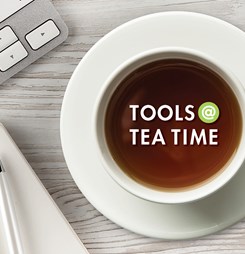
Archive: 2020-2021 Tools @ Tea Time Program
Program Type:
K-12 TPD
K-12 TPD
Teachers! Grab your afternoon tea and log in for an end-of-the day boost, with tips and resources from the Museum Teacher Professional Development Team and an opportunity to share strategies with other teachers about remote and hybrid learning.
This browser is no longer supported.
We have detected you are using a less secure browser - Internet Explorer.
Please download or use Google Chrome, Firefox or if using Windows 10, you may also use Microsoft's Edge browser.
